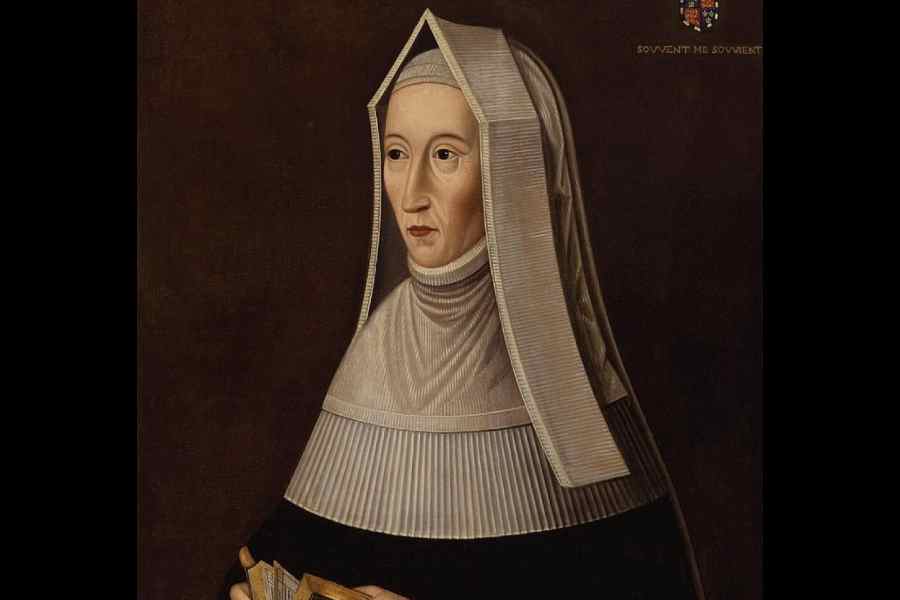For generations, residents of Collyweston — a village in central England snuggled up against the River Welland — passed down stories of a grand Tudor palace, of royal processions through the valley below, of the mother of a king who had called it home.
Over hundreds of years, the stories persisted, even as memory of the palace’s whereabouts faded. But the lore suddenly came to life when a handful of amateur historians unearthed portions of the long-lost palace, buried under a few feet of soil. Historians from the University of York have verified their findings.
“We are a small village with a small group of enthusiasts, and what we’ve basically achieved here is nothing short of a miracle,” said Chris Close, 49, the chairman of the Collyweston Historical and Preservation Society. “You know, it’s not every day you get to dig up a part of your country’s past.”
Close, soft-spoken and warm with a dimpled smile, was raised in Collyweston, with family roots that go back 400 years here. He remembers hearing stories of the palace as a young boy. It belonged to Lady Margaret Beaufort, who played a major role in the Wars of the Roses, a series of civil wars for the English throne. She acquired it in 1487, two years after her son was crowned king as Henry VII. He, his son Henry VIII, and Elizabeth I all walked the palace halls.
After the Tudor era, which ended in 1603, the palace fell into disrepair. Its contents were sold, portions knocked down or repurposed, and new buildings went up. The palace slowly faded into history, disappearing into the dirt. Almost.
Fast forward to 2017, when Close became chairman of the historical society — somewhat by chance. History had never been his passion, but he had promised his great-uncle, who once led the group, to help keep it going. A year after his great-uncle’s death, he made good on his promise.
Close — who, by day, works for a British company that builds new homes — took over the top job at the society at a precarious time. The group’s membership, then mostly retirees, had dwindled, and it had just 500 pounds, about $635, in the bank. Meetings were spent poring over old Collyweston records with little mission, and the few members were considering wrapping things up. Close knew he needed to inject some energy into the proceedings.
He shifted the society’s newsletter to email, from print. He set up social media accounts. And crucially, he asked members what they really wanted to focus on. The response was clear: They wanted to find the Tudor palace.
The villagers suspected that remnants were hidden under the soil, but with limited expertise and even less money, they did not have much to go on.
First, they relied on what little they did know about the palace’s history — including local lore that had percolated for years.
Nowadays, Collyweston, population 564, is little more than a few pretty stone houses with picturesque views over sprawling fields. But glimpses of the royal history were visible to anyone who looked carefully, said Sandra Johnson, 68, a retired real estate agent who now does research full time for the historic society.
She noted that local residents had long referred to a walled garden in the area as the “palace gardens”, and that some terraces and fish ponds could still be seen carved into the landscape.
“We knew it was here,” she said. “It was just a question of getting the evidence to prove it.”
Over several months, the group trawled through old maps and records. That took them only so far.
Around that time, the group connected with Rachel Delman, now a historian at the University of Oxford who was then doing research on the palace. Her work provided detailed descriptions of palace buildings that she had found in various historical archives.
The research was “a little bit of a light that got shone into the project,” Close said.
But the amateur historians soon realised that archaeology had become a high-tech pursuit and that they needed to embrace technology, too. They applied for grants and got enough money to hire a company to do a drone survey and geophysical scan of the village. The growing buzz in Collyweston around their activities helped attract new members.
The real breakthrough came from ground-penetrating radar scans in 2021 and 2022 that revealed human-made material under the soil. This guided them on where to dig.
Last May, they found the first evidence of the palace walls: portions of the clearly defined base of a thick wall and a foundation that experts later verified.
New York Times News Service











